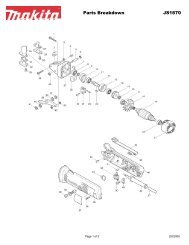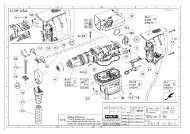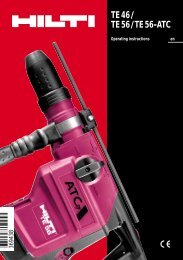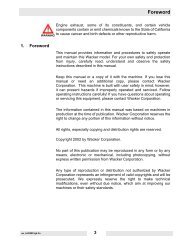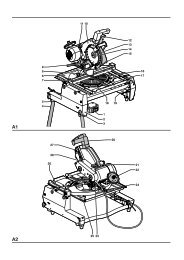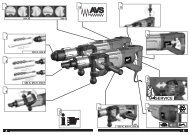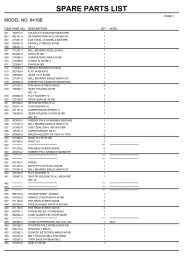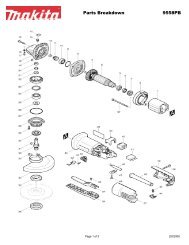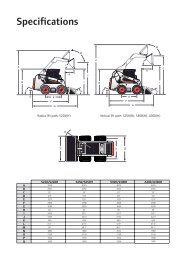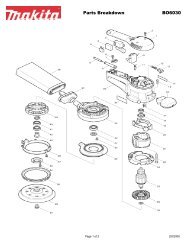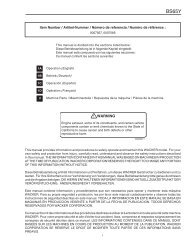Makita - HM1303 - Rotary Hammer Drill - GGH Hire Ltd
Makita - HM1303 - Rotary Hammer Drill - GGH Hire Ltd
Makita - HM1303 - Rotary Hammer Drill - GGH Hire Ltd
Create successful ePaper yourself
Turn your PDF publications into a flip-book with our unique Google optimized e-Paper software.
24. When servicing a tool, use only identical<br />
replacement parts. Follow instructions in<br />
the Maintenance section of this manual.<br />
Use of unauthorized parts or failure to follow<br />
Maintenance instructions may create a risk of<br />
electric shock or injury.<br />
USE PROPER EXTENSION CORD: Make sure your extension cord is in good condition.<br />
When using an extension cord, be sure to use one heavy enough to carry the current your<br />
product will draw. An undersized cord will cause a drop in line voltage resulting in loss of<br />
power and overheating. Table 1 shows the correct size to use depending on cord length and<br />
nameplate ampere rating. If in doubt, use the next heavier gage. The smaller the gage number,<br />
the heavier the cord.<br />
Table 1: Minimum gage for cord<br />
Ampere Rating<br />
Volts<br />
Total length of cord in feet<br />
120 V 25 ft. 50 ft. 100 ft. 150 ft.<br />
More Than Not More Than AWG<br />
0 6 18 16 16 14<br />
6 10 18 16 14 12<br />
10 12 16 16 14 12<br />
12 16 14 12 Not Recommended<br />
SPECIFIC SAFETY RULES<br />
USB009-2<br />
DO NOT let comfort or familiarity with product (gained from<br />
repeated use) replace strict adherence to hammer safety rules.<br />
If you use this tool unsafely or incorrectly, you can suffer serious<br />
personal injury.<br />
1. Hold tools by insulated gripping surfaces<br />
when performing an operation where the<br />
cutting tool may contact hidden wiring or<br />
its own cord. Contact with a “live” wire will<br />
make exposed metal parts of the tool “live”<br />
and shock the operator.<br />
2. Wear ear protectors when using the tool<br />
for extended periods. Prolonged exposure<br />
to high intensity noise can cause hearing<br />
loss.<br />
3. Wear a hard hat (safety helmet), safety<br />
glasses and/or face shield. Ordinary eye<br />
or sun glasses are NOT safety glasses. It<br />
is also highly recommended that you wear<br />
a dust mask and thickly padded gloves.<br />
4. Be sure the bit is secured in place before<br />
operation.<br />
5. Under normal operation, the tool is<br />
designed to produce vibration. The<br />
screws can come loose easily, causing a<br />
breakdown or accident. Check tightness<br />
of screws carefully before operation.<br />
6. In cold weather or when the tool has not<br />
been used for a long time, let the tool<br />
warm up for a while by operating it under<br />
no load. This will loosen up the lubrica-<br />
4



